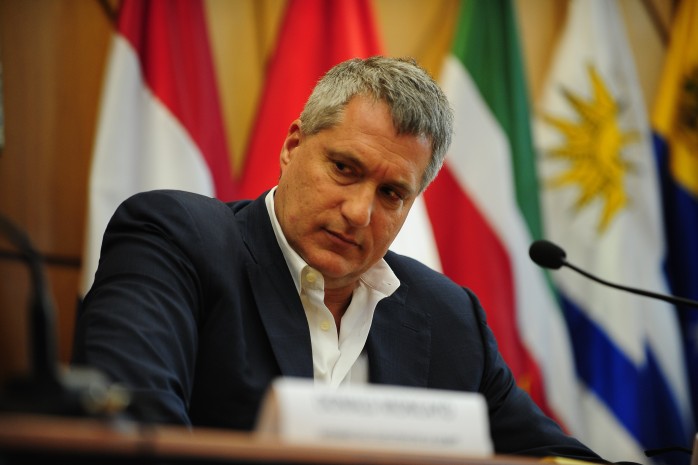Caso Chevron
Forensic Analysis Confirms the Overwhelming Evidence That Donziger and His Associates Ghostwrote the Lago Agrio Judgment
The Amazon Post 26/05/2015

Steven Donziger and his few remaining supporters have been trumpeting a computer forensics report that they claim is a “game changer” in their decades-long attempt to extort billions of dollars from Chevron and to distract from the U.S. federal court’s ruling against them.
But recent testimony by the report’s author confirms that the $9.5 billion Ecuadorian judgment against Chevron was the product of fraud, further undermining Donziger’s outlandish claims.
Donziger’s team has published a variety of press releases and blog posts claiming that they have finally found a smoking gun that will unravel Chevron’s case: a forensic analysis of the hard drives belonging to Judge Nicolas Zambrano, who issued the $19 billion judgment against Chevron. On May 8, the International Arbitration Tribunal hearing Chevron’s claims against Ecuador allowed the public release of the report by the Republic of Ecuador’s forensic expert J. Christopher Racich.
Rather than disproving that the Ecuadorian judgment was ghostwritten, Ecuador’s expert’s hard drive analyses instead corroborate and bolster the already extensive evidence supporting Chevron forensic expert Spencer Lynch’s conclusion that Zambrano was not the author of the judgment.
Chevron laid out Lynch’s findings in two briefs filed with the International Arbitration Tribunal in August 2014 and January 2015. (Lynch’s reports can be found here and here. Highlights are summarized here.) In short, they prove that Zambrano was not the author of the Ecuadorian judgment against Chevron.
Ecuador’s expert’s own report and his recent testimony before the International Arbitration Tribunal support Chevron’s findings:
- The analysis performed by both forensic experts confirmed that the judgment text found on Zambrano’s computers contained text copied verbatim from Donziger’s team’s internal, unfiled documents. This clearly indicates that the judgment was ghostwritten by the plaintiffs. Racich also told the arbitration tribunal that portions of the text were “identical.”
- Donziger’s team’s internal database was used to calculate statistics in the judgment. The forensic evidence establishes that Zambrano could not have performed these calculations. In his testimony before the tribunal, Racich speculated about who or where the statistical calculations may have come from, ultimately conceding that it could just as easily have been Donziger team member, Pablo Fajardo, who performed the calculations.
- Both forensic experts agree that USB devices and Hotmail were used extensively on Zambrano’s computers and are two of the multiple ways the secretly copied text in the Lago Agrio judgment could have been provided to Zambrano. They also both also admit the possibility of text being copied directly from hard copy documents.
- Both forensic experts agree that the metadata of the judgment document does not establish that Zambrano was the author of the issued judgment, nor does it establish that any of the judgment text was originally composed on either of Zambrano’s computers. This is consistent with Chevron’s assertion that the plaintiffs’ team authored much, if not all, of the judgment’s contents.
- The analysis of the contents of Zambrano’s hard drives by both forensic experts confirms that Zambrano and his typist, Evelyn Calva, lied about how the judgment was drafted. There are significant inconsistencies between the forensic data and Zambrano and Calva’s statements about which computer Zambrano used, when he started drafting the judgment, the length of time he worked on the judgment, the use of translation and legal research websites, and the editing process. This is no surprise because, when Zambrano testified in U.S. federal court, he couldn’t even answer basic questions about the legal and factual elements of the judgment, produce notes or drafts related to it, or explain how he relied on English and French language sources when he read neither language.
- Forensic analysis confirms the Zambrano – Guerra ghostwriting relationship. Both forensic experts agree that drafts of nine orders issued by Zambrano in the Chevron case were found on the computer of Alberto Guerra, another judge, suggesting that Guerra ghostwrote these statements and indicating a pattern of ghostwritten documents released by Zambrano. This supports the sworn testimony of Judge Guerra.
Testimony given before the International Arbitration Tribunal in May 2015 by Lynch and Racich can be found here and here.
Overall, the “smoking gun” Racich report fails on all counts to undermine the U.S. court’s decision that the Ecuadorian judgment was ghostwritten by the plaintiffs themselves and thus procured by fraud. No amount of public clamoring by Donziger and his few remaining supporters is a match for facts.
Fuente OriginalNotas relacionadas
-
 Se expone el chantaje contra Chevron
Se expone el chantaje contra Chevron -
 Disputa entre Chevron y Ecuador sigue viva en Holanda
Disputa entre Chevron y Ecuador sigue viva en Holanda -
 Ecuador fue condenado hace 4 años en La Haya por apoyar el fraude contra Chevron
Ecuador fue condenado hace 4 años en La Haya por apoyar el fraude contra Chevron -
 Analysis: Liberal Media Lionize Anti-Chevron Lawyer Steve Donziger
Analysis: Liberal Media Lionize Anti-Chevron Lawyer Steve Donziger -
 Análisis: Medios de comunicación izquierdistas convierten en mártir al corrupto abogado anti-Chevron, Steven Donziger
Análisis: Medios de comunicación izquierdistas convierten en mártir al corrupto abogado anti-Chevron, Steven Donziger -
 Hace 3 años, Ecuador fue condenado en La Haya por apoyar el fraude contra Chevron
Hace 3 años, Ecuador fue condenado en La Haya por apoyar el fraude contra Chevron
